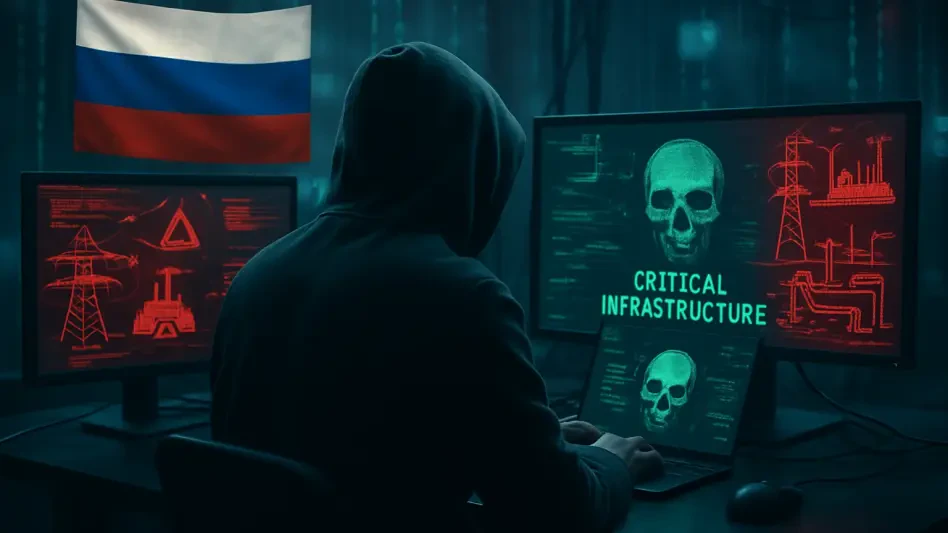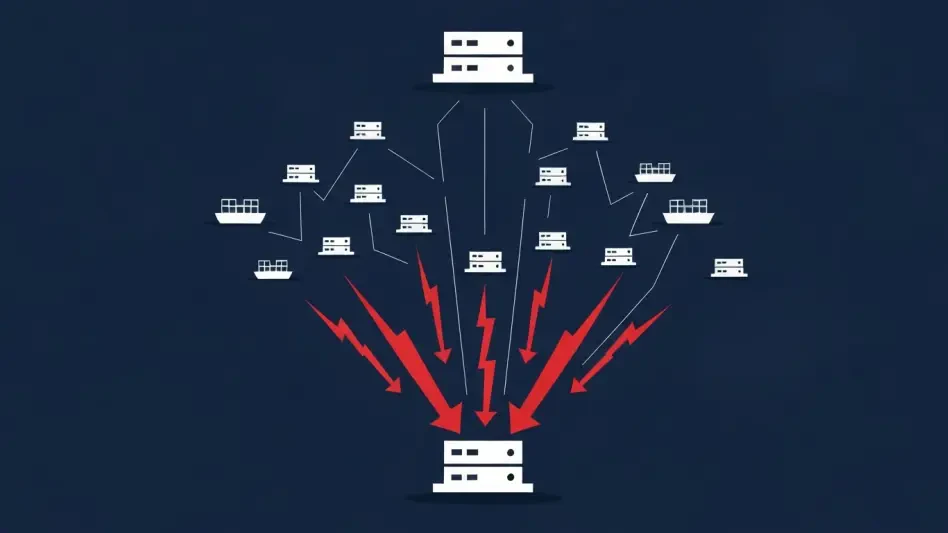In a chilling reminder of the vulnerabilities within modern society, a recent alert from the Federal Bureau of Investigation (FBI) has spotlighted a persistent and sophisticated cyber threat emanating from state-sponsored hackers tied to the Russian Federal Security Service (FSB). Identified in cybersecurity circles by aliases such as Berserk Bear, Dragonfly, and more recently Static Tundra by Cisco Talos, these actors under FSB’s Center 16 have been implicated in targeting critical infrastructure across the United States and beyond. Sectors like energy, transportation, and utilities are under particular scrutiny, as these systems form the backbone of national security and public safety. The urgency of the FBI’s warning cannot be overstated, as it highlights the potential for disruption or even sabotage of vital networks through calculated cyberattacks. This escalating concern sets the stage for a deeper exploration into how these threats manifest, the methods employed by these adversaries, and the necessary steps to safeguard essential services from such insidious interference.
Unveiling the Cyber Threat Landscape
The nature of the cyber threat posed by FSB-affiliated hackers is both intricate and alarming, focusing heavily on exploiting weaknesses in network infrastructure. A primary tactic involves targeting outdated and unpatched systems, particularly through known vulnerabilities like CVE-2018-0171 in Cisco Smart Install (SMI) functionality. This flaw enables unauthorized access and manipulation of device configurations, creating a gateway for deeper infiltration. Additionally, legacy protocols such as Simple Network Management Protocol (SNMP) versions 1 and 2, which lack robust encryption, serve as easy entry points for attackers. Over recent months, investigations have uncovered that thousands of devices linked to U.S. critical infrastructure have had their configuration files harvested and altered, ensuring persistent access for these malicious actors. This access often facilitates detailed reconnaissance within industrial control systems (ICS) and operational technology (OT) environments, laying the groundwork for potentially devastating actions like data theft or operational disruption.
Beyond the technical exploits, the strategic intent behind these operations reveals a calculated effort to undermine national stability. The focus on critical infrastructure is not a random choice but a deliberate move to position adversaries for future escalation. FBI findings indicate that these hackers often target end-of-life devices no longer supported with security updates, making them susceptible to remote code execution and tampering. Custom malware, such as the SYNful Knock implant identified years ago, embeds itself into Cisco router firmware, offering long-term persistence and command-and-control capabilities. This sophistication underscores a broader pattern of Russian state-sponsored tactics that prioritize stealth and strategic footholds within adversarial networks. The persistence of such methods over more than a decade demonstrates a relentless commitment to exploiting technological weaknesses, posing a continuous challenge to cybersecurity defenders tasked with protecting vital systems from unseen but ever-present dangers.
Historical Patterns and Evolving Tactics
Delving into the historical context, the activities of FSB Center 16 reveal a long-standing campaign against global networking devices, particularly those running outdated software or hardware. For over ten years, these state-sponsored actors have refined their approach, consistently targeting systems that lack modern security features. Their operations have included deploying custom tools designed to infiltrate and maintain access to critical networks. The FBI has documented instances where configuration tampering has allowed hackers to map out infrastructure environments, often as a precursor to more aggressive actions. This pattern of reconnaissance aligns with a strategic objective to gain intimate knowledge of targeted systems, such as those controlling energy grids or transportation hubs, which could be exploited during geopolitical tensions or conflicts to inflict maximum disruption on civilian life and national security.
The evolution of tactics employed by these hackers further complicates the defensive landscape. While early efforts relied on exploiting basic vulnerabilities, recent operations show an increased reliance on advanced malware and subtle manipulation of network protocols. The use of legacy systems, often overlooked in routine security audits, remains a significant weakness for many organizations. Alerts and advisories over the years have consistently emphasized the risks posed by such outdated technology, yet adoption of modern, secure alternatives lags behind. Joint cybersecurity advisories, including those issued recently, stress the importance of recognizing indicators of compromise, such as unusual SNMP traffic or unauthorized changes in device settings. These evolving methods highlight the need for continuous vigilance and adaptation in cybersecurity practices to counter an adversary that is both patient and resourceful in its pursuit of strategic advantage.
Strategies for Mitigation and Defense
Addressing this cyber threat requires a multifaceted approach, as outlined in the FBI’s urgent recommendations to critical infrastructure operators. Immediate actions include patching known vulnerabilities, such as those exploited in Cisco systems, and disabling unnecessary legacy protocols that lack encryption. Upgrading to supported devices with modern security features is also critical, as is implementing network segmentation to isolate sensitive ICS environments from broader IT networks. Organizations are encouraged to monitor for signs of compromise, including irregular network traffic or configuration anomalies, and to report any suspected incidents to the FBI or the Internet Crime Complaint Center (IC3) with comprehensive technical evidence. These steps form a foundational defense against the persistent reconnaissance efforts that could escalate into more disruptive cyberattacks if left unchecked.
Looking beyond immediate fixes, a long-term commitment to cybersecurity resilience is essential for safeguarding national infrastructure. This involves not only technical upgrades but also fostering a culture of proactive threat hunting and information sharing among public and private sectors. The FBI’s guidance emphasizes the value of collaboration in disrupting the foothold these hackers seek to establish. By blending technical mitigations with robust reporting mechanisms, organizations can better position themselves to detect and respond to threats before they materialize into full-scale attacks. Historical data and forensic analyses by experts, including insights from Cisco Talos, reinforce that while the tactics may vary, the underlying goal of infiltrating critical systems remains unchanged. Strengthening defenses through updated technology and coordinated efforts offers a pathway to mitigate risks, ensuring that essential services remain protected against a backdrop of evolving state-sponsored cyber aggression.
Reflecting on a Path Forward
Reflecting on the severity of the cyber threats posed by FSB Center 16, it becomes evident that these Russian state-sponsored hackers have carved a dangerous niche by exploiting legacy vulnerabilities in U.S. and global critical infrastructure. Their sophisticated methods, from deploying custom malware like SYNful Knock to tampering with device configurations, have targeted outdated systems to secure persistent access, often focusing on industrial control systems. The FBI’s warnings have underscored the calculated nature of these reconnaissance efforts, which aim at potential future disruption. Moving forward, the call to action is clear: organizations need to prioritize patching flaws, upgrading hardware, and enhancing network security protocols. Vigilance in monitoring for suspicious activity and swift reporting of incidents are positioned as critical next steps. This evolving threat landscape demands not just reaction but anticipation, urging both public and private sectors to invest in advanced defenses and collaborative strategies to protect vital services from calculated sabotage.








